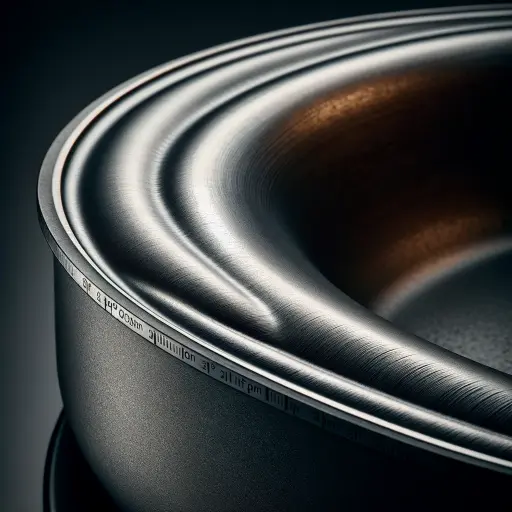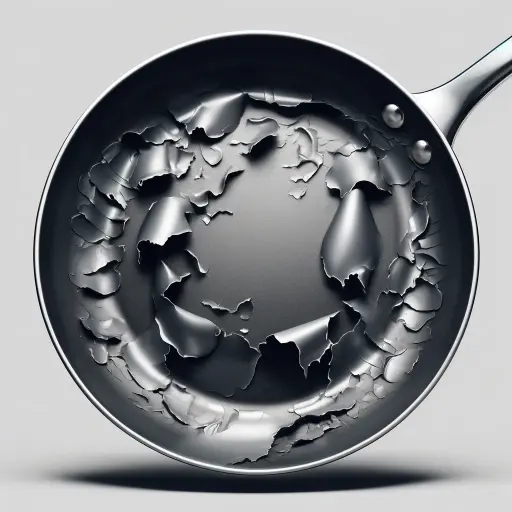Does Using Induction Cookware on Gas Affect Its Performance on Induction Cooktops?
Updated: 10 Jun 2024
228

When you invest in high-quality induction cookware, you might wonder if it’s safe to use on other types of stoves, like gas. This question is important as the answer affects not just the longevity of your cookware but also its performance across different cooking platforms.
As an expert in stove and cookware technology, I’ll explain the nuances of using induction cookware on gas cooktops and whether it impacts performance when switched back to induction cooking.
Induction Cookware on Gas Stoves
A. Understanding Induction Cookware
Induction cookware is specially designed to work with induction stovetops, which use magnetic fields to heat the pan directly. This type of cookware typically contains a base with a high iron content, which is necessary for the magnetic energy to work effectively. The core feature of induction pots and pans is their ability to heat up quickly and respond instantly to temperature changes.
B. Can You Use Induction Cookware on Gas Stoves?
The simple answer is yes, you can use induction cookware on gas stoves. Most induction cookware is made from materials like stainless steel or cast iron, which are also compatible with gas. However, the real question is whether doing so will later affect its performance on an induction cooktop.
Does Using a Gas Stove Affect the Performance of Induction Cookware?
Using induction cookware on a gas stove can lead to several issues that affect its performance when returned to an induction cooktop. The uneven heat and potential for direct damage to materials and coatings can make induction cookware less efficient and shorten its lifespan.
While it’s technically possible to use induction-compatible cookware on gas stoves, doing so regularly can compromise its effectiveness and durability on its intended induction surface. For those who frequently switch between gas and induction, it may be worth investing in separate sets of cookware to maintain optimal performance and longevity on each type of cooktop.
A. Impact on Material Composition
Induction cookware is typically made from materials like cast iron or stainless steel, which are also compatible with gas stoves. However, the direct flame of a gas stove impacts these materials differently compared to the electromagnetic fields used by induction cooktops.

For instance, high heat from a gas flame can cause certain materials to heat unevenly, which over time may lead to warping. Warped cookware does not make effective contact with induction cooktops, leading to inefficient cooking and energy usage.
B. Base Construction Challenges
The base of induction cookware needs to maintain a flat surface to function efficiently on an induction cooktop. Gas stoves, with their concentrated flames, can unevenly heat the base of your pots and pans, especially if the base is not sufficiently thick.

This uneven heating can eventually cause the base to deform. A deformed base significantly reduces the cookware’s effectiveness on an induction cooktop because it disrupts the necessary close contact with the cooktop surface.
C. Size and Shape Considerations
While the size and shape of cookware are generally consistent across different stove types, the direct heat from a gas stove can impact the integrity of induction cookware over time. For example, larger pots and pans may be exposed to more intense direct heat at the center when used on a gas burner that is too small, potentially leading to hot spots and uneven cooking.
This can degrade the cookware’s material, making it less effective when returned to an induction cooktop.
D. Effects on Lids and Cookware Depth
Cookware lids and overall depth play significant roles in cooking efficiency. On gas stoves, the intense heat can cause damage to lids if not designed to handle direct flames, affecting their ability to seal properly. A poor seal reduces cooking efficiency on all types of cooktops, including induction. (Learn about the causes of gas stove explosions https://stovemastery.com/what-causes-a-gas-stove-to-explode/)
Similarly, the depth of the cookware, which helps distribute heat evenly in induction cooking, can be a disadvantage on a gas stove if the heat does not adequately reach the upper portions of deep pots, altering how the cookware performs when used on an induction cooktop later.
E. Interior Coating and Maintenance
The interior coating of induction cookware, such as non-stick surfaces, can be particularly susceptible to damage from the high heat of a gas stove. Non-stick coatings require careful temperature management, which gas stoves can complicate due to their less precise heat control.
Damage to these coatings not only affects the non-stick properties but can also impact the cookware’s magnetic properties essential for induction cooking.

Additionally, maintenance and care practices differ between gas and induction cooktops. Cookware used on gas stoves may accumulate soot and residues that are less common with induction cooking.
F. Heat Distribution and Material Integrity
Using induction cookware on a gas stove doesn’t immediately damage the cookware. These pots and pans are designed to withstand high temperatures, whether they come from an induction cooktop or a gas flame. However, the type of heat and its application can cause different effects. Gas stoves heat cookware with an open flame.

This flame heats the part of the cookware that is directly exposed to it. In contrast, induction stoves generate a more evenly distributed heat across the bottom of the pan.
One potential issue from using induction cookware on a gas stove is the risk of warping. If a pan heats unevenly, it can warp over time. A warped pan is less effective on an induction cooktop because it needs flat contact with the surface to function properly.
G. The Risk of Thermal Shock

Another concern is thermal shock, which can happen if the cookware is subjected to sudden changes in temperature. For example, moving a hot pan from a gas flame to a cold surface could cause it to warp or crack, especially if the material is not designed to handle such stress. Induction cookware, while durable, is optimized for gradual temperature changes through electromagnetic energy, not the direct flame of a gas stove.
H. Manufacturer Recommendations
It’s crucial to consider the manufacturer’s guidance. Most brands that produce induction cookware also provide guidelines on how to use their products safely and effectively across different heat sources. Disregarding these guidelines can lead to decreased efficiency and potential damage, affecting the cookware’s warranty and lifespan.
I. Long-Term Effects and Performance
Over long periods, the frequent use of induction cookware on gas stoves could potentially degrade its magnetic properties.

The direct flame of a gas stove may also alter the microstructure of the metal over time, decreasing its efficiency on an induction cooktop. These changes might not be immediate but can accumulate, leading to noticeable performance issues after extensive use.
J. What Experts Say
Culinary professionals often advise using the right tools for the job to ensure optimal performance and longevity of the cookware. While induction pans can be used on gas stoves in a pinch, regularly switching between gas and induction is not recommended for those who want to maintain peak performance.
Conclusion
In conclusion, while you can use induction cookware on gas stoves, doing so may risk its long-term performance on induction cooktops. To preserve your cookware’s functionality and extend its lifespan, it’s best to use it as intended and follow the manufacturer’s instructions.
For those who frequently switch between gas and induction, consider investing in versatile cookware designed to handle both heat sources effectively. This approach ensures you get the best cooking results, no matter the stove type, keeping your culinary creations delicious and perfectly cooked every time.
This knowledge and a mindful approach to cookware use can greatly enhance your cooking experience and protect your investment in high-quality kitchen tools.
Reference
- https://www.researchgate.net/publication/276267792_Energy_Efficiency_Analysis_of_Different_Materials_for_Cookware_Commonly_Used_in_Induction_Cookers
- https://calmta.org/wp-content/uploads/sites/263/MTI-Advancement-Plan-Induction-Cooktop-1.pdf
- https://www.researchgate.net/publication/225628880_Improving_the_energy_efficiency_of_induction_cooking
Please Write Your Comments